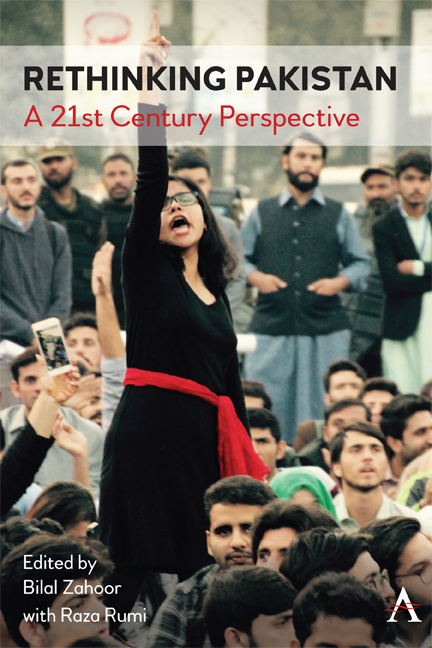Book contents
- Frontmatter
- Dedicated
- Contents
- Acknowledgements
- Introduction
- Part I Identity, Religion and Radicalisation
- Part II Development, Reform and Governance
- Part III Rights, Repression and Resistance
- Part IV Sex, Gender and Emancipation
- Part V Conflict, Diplomacy and Foreign Policy
- Contributors
- Bibliography
- Index
Chapter 8 - Land Reforms: Key to Social Justice and Progress
Published online by Cambridge University Press: 20 January 2022
- Frontmatter
- Dedicated
- Contents
- Acknowledgements
- Introduction
- Part I Identity, Religion and Radicalisation
- Part II Development, Reform and Governance
- Part III Rights, Repression and Resistance
- Part IV Sex, Gender and Emancipation
- Part V Conflict, Diplomacy and Foreign Policy
- Contributors
- Bibliography
- Index
Summary
The iniquitous and unjust landownership pattern in Pakistan has been one of the principal causes of the state's failure to meet the people's aspirations for freedom from want, hunger and disease. No government will be able to better the lot of the country's majority and realise its potential to meet the challenges of the twenty-first century without a radically reformed land utilisation system.
The first argument for reforming the landownership pattern relates to the urgency of ending the plight of the huge number of small owners: one-fourth of all farms are under 1 acre in size. Farms under 5 acres constitute 64 per cent of the total farms, while those under 12.5 acres – that is below subsistence level – are 89 per cent of the total. Similarly, 12.5–25 acre farms are 7 per cent of the total, while 25–150 acre ones make up 4 per cent of the stock. Only 11 per cent of all farms are economic holdings. Meanwhile, small holdings have been getting smaller over the past 46 years: the number of under-1 acre farms went from being 4 per cent of the total in 1972 to being 25 per cent of the total in 2010. Furthermore, the number of under subsistence level farms also rose, from being 68 per cent of the total in 1972 to 89 per cent in 2010. In the same time period, large landholdings have shot up in number: farms measuring 25 acres or more constituted only 4 per cent of the total back then, but now make up 24 per cent of the total farm area.
To sum up, the 2010 Agricultural Census data show that 20 per cent of the total farm area (10.38 million acres) was operated by tenants, while 80 per cent (42.53 million acres) was operated by owners or owner-cum-tenants. The figures related to farm area under owner cultivation can be challenged because landlords all over the country, and especially in Sindh, claim to cultivate their lands themselves although this work is done by tenants and farm workers, including bonded labourers.
- Type
- Chapter
- Information
- Rethinking PakistanA 21st Century Perspective, pp. 87 - 96Publisher: Anthem PressPrint publication year: 2020



